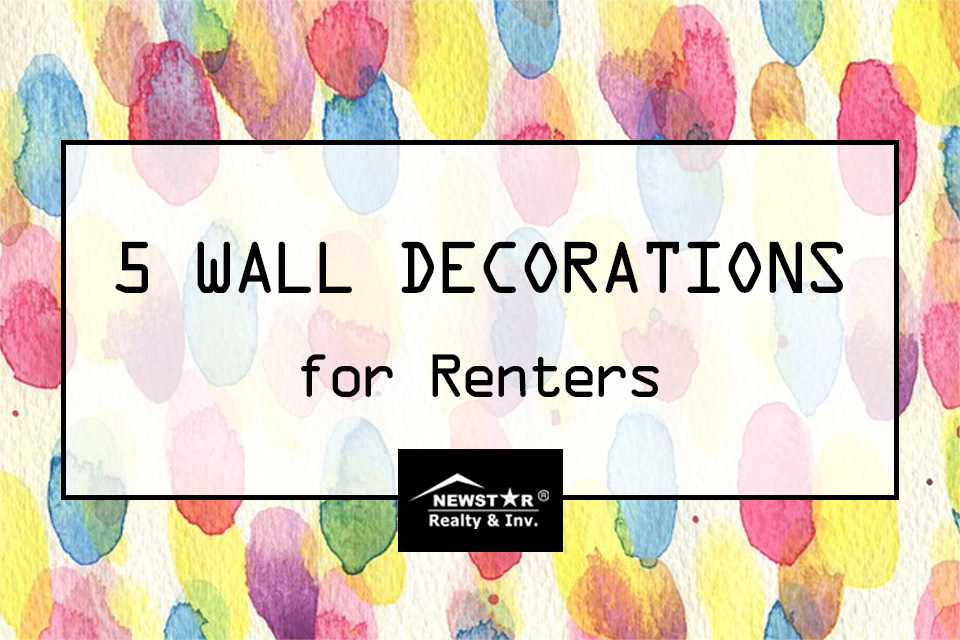
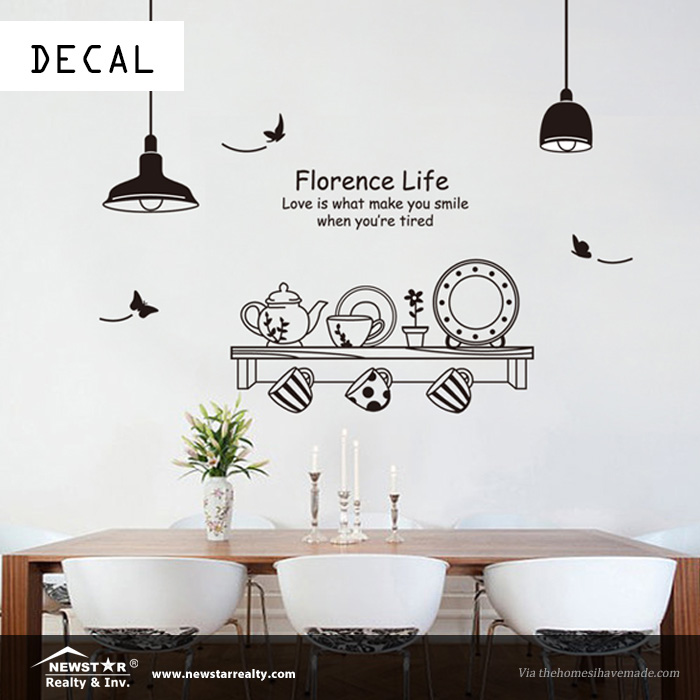
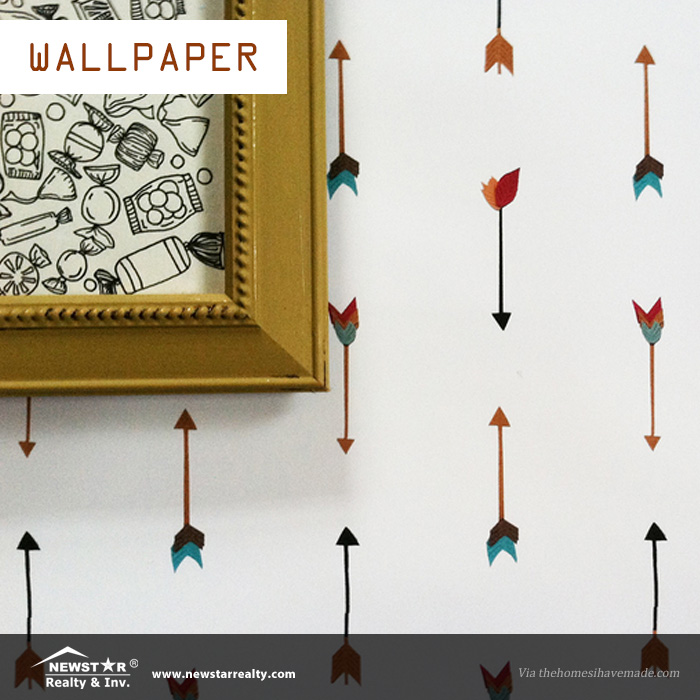
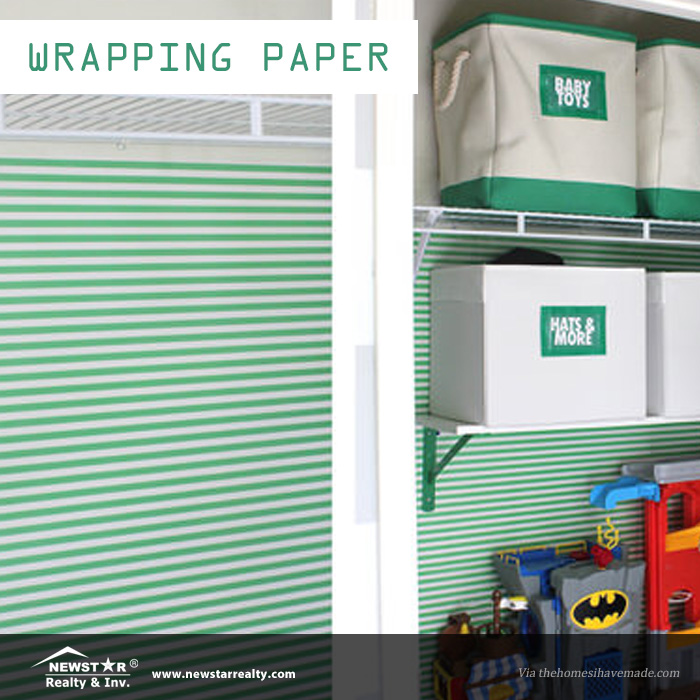
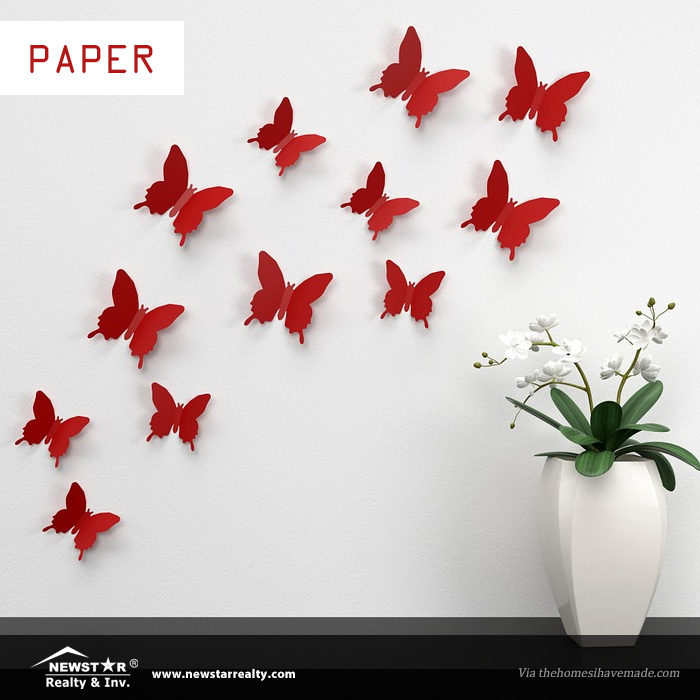
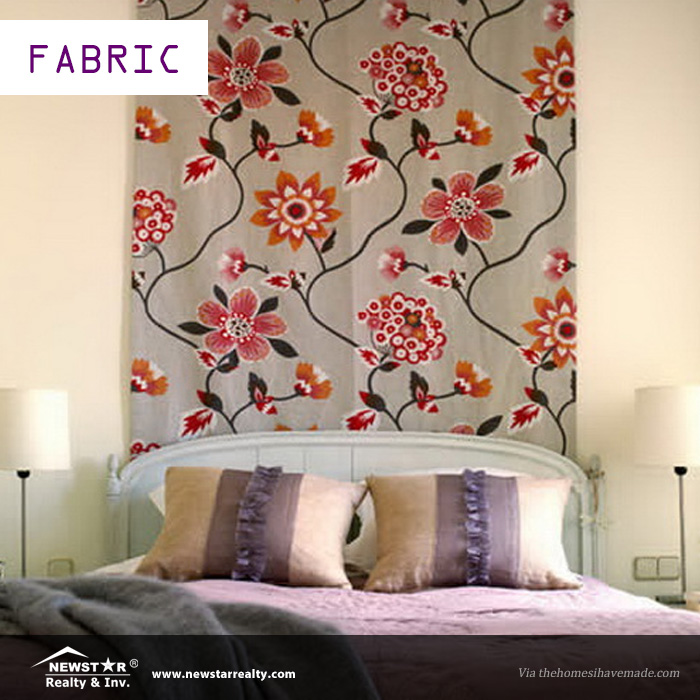

Between vacations, BBQs, and pool parties, we can lose track of routines, projects and “stuff.”

Sometime about now in mid-summer we begin asking ourselves, “Why do things seem to be out of control? I planned on organizing my photos, painting that cute dresser I picked up at the yard sale last fall, and waking up without an alarm clock on Fridays. None of it has happened!”
This scenario is all too common — and yet there is good news. It’s never too late to get and stay organized for the remainder of the summer.
People tend to get busy with outdoor activities and become distracted by vacations, plus household schedules and routines tend to be different than during the school year. The most common areas that seem to spiral out of control are:
Here are my tips for getting and staying organized through the summer.
We’re conditioned to create traditions and rituals. We buy new outdoor furniture and decorations for our backyard barbecue, and bring friends and family together for camping trips chock full of new-fangled gadgets and equipment. We have family reunions and summer vacations.
We’re used to buying, creating, and preparing for events — yet we don’t really have a method or system to deal with the aftermath.
It may be time to say goodbye to the stuff we buy “on the fly,” like walkie talkies for playful banter on road trips, floaties for the swimming pool, collapsible picnic tables for the beach, croquet sets for the backyard, and rain ponchos for the fast-moving and sudden rainstorm.
I recommend two steps for handling summer clutter:
Often we feel more disorganized or confused about our perceived “free time” during the summer months. This can happen because we spend the first half of the year postponing projects until summer vacation.
Each year we stack the projects-in-waiting for summer, and each year we seem to forget that we would really rather enjoy some time off in nature, traveling, or getting together with friends.
If you want to reduce the pressure for yourself, release yourself from too many good intentions, like repainting the powder room; reading the stack of books you’ve collected; and that wishful photo-organizing project.
Instead, pick just one project and focus on it. By making one project the priority, you can do little bits of it from time to time. So, instead of putting off the project and feeling badly that it isn’t getting done, break your priority project down into doing one small step per day.
Want to paint that dresser? Allow yourself 13 “moments” to complete the project and never miss a bit of summer fun. Use this project breakdown to make any project fit in around your unpredictable summer schedule.
Painting a dresser purchased at a yard sale
Most of us realize instinctively that sleep is important.
“You know that babies and children need sleep to grow,” says Val Sgro, a professional organizer and author. “You know that an injured body heals itself faster with good sleep. You know that if you don’t get enough sleep, you become sluggish and cranky, and you have trouble thinking straight. That old saying, ‘I’ll sleep on it,’ comes from the realization that the solution to a problem often seems to reveal itself after a good night’s sleep.
“Contrary to common belief, your brain does not rest when you sleep,” she continues. “It is often more active than when you’re awake. It’s busy — busy making sure it stays organized.”

And therein lies the key to getting and staying organized in the summer months. Though our sleep routines will likely be off kilter, it’s worth asking the question, “How will I be able to get seven or eight hours of sleep tonight? How will I fit it in?”
Maybe you need to grab a mid-day nap or put yourself (not just the kids) to bed an hour earlier. Getting more sleep will help you make better decisions when you pack (and thus have fewer items to “buy on the fly” while traveling).
More sleep means being more alert driving on road trips; consuming less sugar or caffeine for a mid-day boost; and showing up with an overall better outlook for the day. And in the middle of summer travel or hosting guests who are visiting for a week, that couldn’t be a more welcome benefit.
DorothyTheOrganizer (Dorothy Breininger) is America’s most innovative organizer and can be seen weekly on the critically acclaimed, Emmy-nominated show “Hoarders” on A&E. She also appears on The Doctors, The Dr. Phil Show and The View. Creating organization solutions that change people’s lives is her passion. DorothytheOrganizer.com features tips and home organization solutions that will finally let you rid yourself of the clutter that holds you back from success.

by energy.gov

Here you’ll find strategies to help you save energy during the spring and summer when the weather is warm and you are trying to keep your home cool. Some of the tips below are free and can be used on a daily basis to increase your savings; others are simple and inexpensive actions you can take to ensure maximum savings through the spring and summer. For more ways to stay cool while saving energy, check out our Energy Saver 101 infographic, covering everything you need to know about home cooling.
If you haven’t already, conduct an energy audit to find out where you can save the most.
Also check out tips to save energy during the fall and winter.

Water heating accounts for about 18% of the energy consumed in your home.
Adults spend more time in their bedroom than in any other room in their house. But you wouldn’t know it from the home sales process. Buyers and sellers alike often pay more attention to kitchens, master bathrooms, closets, and yards than they do to this vital space where they will usually spend more than a third of their 24 hours each day.
“Who spends that kind of time in the kitchen?” asks sleep expert Nancy H. Rothstein, founder of The Sleep Ambassador in Chicago, a source for education, consulting services, and resources that optimize healthy sleep.
Yet more attention is being paid to the importance of getting adequate sleep, from high-profile advocates like Arianna Huffington, who recently published her book, The Sleep Revolution: Transforming Your Life, One Night at a Time (Harmony, 2016), to medical professionals. “Fewer than six hours [a night] can lead to diseases — a higher rate of diabetes, obesity, cardiovascular problems, and even shorter life spans,” says Dr. Susheel Patil, clinical director of Johns Hopkins Sleep Medicine in Baltimore.
While there’s no magic figure for the amount of sleep one should get, Patil suggests adults try for seven to eight hours on average. Dr. Michael Breus, a board-certified sleep specialist in Los Angeles known as The Sleep Doctor, uses his household as an example of the variation. “I need between 6 1/2 and 7 hours while my wife needs between 8 and 8 1/2,” he says.
Buyers and sellers alike should strive to furnish a master bedroom that contributes to high-quality sleep. Updating or remodeling the room offers another benefit, says certified color consultant Michelle Mohlere, a salesperson with Gibson International in Los Angeles. A nicely designed bedroom is likely to bring in more money at resale than one without these touches, she says.
Sellers looking to better stage this room will also gain from the following six steps:
1. Stage the bed in a choice spot. Connecticut architect and author Duo Dickinson prefers the bed be set away from the room’s entrance to keep it out of the main circulation path. Kathryn Baker, vice president of design services with Polaris Pacific, a real estate sales and marketing firm in San Francisco, likes to place a bed in a spot so occupants can enjoy the best view — whether that’s inside (maybe toward a fireplace or favorite piece of art) or outdoor (with views of trees or water where possible). Chicago designer Michael Del Piero suggests pairing a bed with an upholstered headboard for those who like to sit up in bed and read; she dresses up the bed with decorative pillows, a duvet, and a throw to personalize it and make it more welcoming to tuck in for sleep.
2. Install the right window treatments. Minimal is the design mantra when it comes to much of the standard room décor today. But while no coverings in some rooms, such as kitchens and living rooms, allows in more light and views, some amount of treatment in a bedroom is needed to block outside light and provide privacy. Del Piero likes to use a blackout shade behind a transparent shade or drapes or a woven wood shade with blackout drapes. Baker favors motorized shades to make opening and closing a task that can be performed from the bed or set by a timer.
3. Use the right lighting. Dickinson discourages installing recessed cans since they chop up a ceiling and aren’t attractive to look at while in bed. He prefers task lighting from lamps on night tables or wall-mounted sconces. Michigan designer Francesca Owings likes hanging one decorative fixture in a ceiling’s center for an aesthetic punch. Sensitive sleepers might appreciate the new Good Night Biological LED bulbs that claim to help regulate a body’s natural circadian rhythm through the production of the hormone melatonin, which helps control sleep and wake patterns, says Breus.
4. Conceal or banish electronics. For years, scientists and health professionals have known about the danger of the blue light that comes from certain electronics equipment and adversely affects melatonin production, says Patil. But only recently have they suggested that you can enhance unwinding and falling asleep by turning off TVs, smartphones, and iPads at least an hour before bedtime. Shutting them off also helps train the brain that the bedroom is primarily a place to sleep rather than stay awake, Patil says. If the temptation is too great, home owners might consider making the master bedroom a no-electronics zone. Baker’s company furnishes model bedrooms in its residential projects without TVs and other electronics technology to demonstrate this idea. “People have responded favorably, and some put TVs in a second bedroom or home office” instead, she says.
5. Pick a soothing palette. Of course, color is a personal preference, but color experts can offer guidelines. “You can’t say one is soothing for all and will make a person feel calm,” says Jessica Boyer, a Chicago designer with Susan Fredman Design Group. Sue Wadden, director of color marketing for paint manufacturer Sherwin-Williams, says colors that aren’t extreme are more restful. “They’re neither too bold, dark, bright, or intense. Rather, soft and calming,” she says. Designer Kimba Hills of Rumba Style in Los Angeles prefers a palette of pale blues, greens, beiges, grays, and whites for the bedroom. Boyer also likes to bring in bedding in white and light creams because she finds they’re calming. “It’s the equivalent of sleeping in a cloud with nothing to distract me. What’s important isn’t what’s trendy but nurturing,” she says.
6. Add creature comforts. If the room’s size allows, consider adding a chaise, chair and ottoman, and night tables. Also, a large area rug or wall-to-wall carpeting can help deaden noise and provide warmth underfoot, says Owings. If the room is located so it opens directly to the outdoors, play this up. Mohlere says real access to bucolic scenery can contribute to a sense of tranquility even more than just viewing the outdoors can. If outdoor access isn’t possible, check to see that windows are operable for fresh air. Other amenities worth considering: a gas- or log-burning fireplace for coziness, artwork for eye candy, and good storage for tidiness. “Too much clutter is distracting,” Rothstein says.
At the end of the day — or the beginning of a new one — real estate pros can emphasize the master bedroom as one more “fabulous room where you spend time in your new home,” Rothstein says.
Barbara Ballinger is a freelance writer and the author of several books on real estate, architecture, and remodeling

Adults spend more time in their bedroom than in any other room in their house. But you wouldn’t know it from the home sales process. Buyers and sellers alike often pay more attention to kitchens, master bathrooms, closets, and yards than they do to this vital space where they will usually spend more than a third of their 24 hours each day.
“Who spends that kind of time in the kitchen?” asks sleep expert Nancy H. Rothstein, founder of The Sleep Ambassador in Chicago, a source for education, consulting services, and resources that optimize healthy sleep.
Yet more attention is being paid to the importance of getting adequate sleep, from high-profile advocates like Arianna Huffington, who recently published her book, The Sleep Revolution: Transforming Your Life, One Night at a Time (Harmony, 2016), to medical professionals. “Fewer than six hours [a night] can lead to diseases — a higher rate of diabetes, obesity, cardiovascular problems, and even shorter life spans,” says Dr. Susheel Patil, clinical director of Johns Hopkins Sleep Medicine in Baltimore.
While there’s no magic figure for the amount of sleep one should get, Patil suggests adults try for seven to eight hours on average. Dr. Michael Breus, a board-certified sleep specialist in Los Angeles known as The Sleep Doctor, uses his household as an example of the variation. “I need between 6 1/2 and 7 hours while my wife needs between 8 and 8 1/2,” he says.
Buyers and sellers alike should strive to furnish a master bedroom that contributes to high-quality sleep. Updating or remodeling the room offers another benefit, says certified color consultant Michelle Mohlere, a salesperson with Gibson International in Los Angeles. A nicely designed bedroom is likely to bring in more money at resale than one without these touches, she says.
Sellers looking to better stage this room will also gain from the following six steps:
1. Stage the bed in a choice spot. Connecticut architect and author Duo Dickinson prefers the bed be set away from the room’s entrance to keep it out of the main circulation path. Kathryn Baker, vice president of design services with Polaris Pacific, a real estate sales and marketing firm in San Francisco, likes to place a bed in a spot so occupants can enjoy the best view — whether that’s inside (maybe toward a fireplace or favorite piece of art) or outdoor (with views of trees or water where possible). Chicago designer Michael Del Piero suggests pairing a bed with an upholstered headboard for those who like to sit up in bed and read; she dresses up the bed with decorative pillows, a duvet, and a throw to personalize it and make it more welcoming to tuck in for sleep.
2. Install the right window treatments. Minimal is the design mantra when it comes to much of the standard room décor today. But while no coverings in some rooms, such as kitchens and living rooms, allows in more light and views, some amount of treatment in a bedroom is needed to block outside light and provide privacy. Del Piero likes to use a blackout shade behind a transparent shade or drapes or a woven wood shade with blackout drapes. Baker favors motorized shades to make opening and closing a task that can be performed from the bed or set by a timer.
3. Use the right lighting. Dickinson discourages installing recessed cans since they chop up a ceiling and aren’t attractive to look at while in bed. He prefers task lighting from lamps on night tables or wall-mounted sconces. Michigan designer Francesca Owings likes hanging one decorative fixture in a ceiling’s center for an aesthetic punch. Sensitive sleepers might appreciate the new Good Night Biological LED bulbs that claim to help regulate a body’s natural circadian rhythm through the production of the hormone melatonin, which helps control sleep and wake patterns, says Breus.
4. Conceal or banish electronics. For years, scientists and health professionals have known about the danger of the blue light that comes from certain electronics equipment and adversely affects melatonin production, says Patil. But only recently have they suggested that you can enhance unwinding and falling asleep by turning off TVs, smartphones, and iPads at least an hour before bedtime. Shutting them off also helps train the brain that the bedroom is primarily a place to sleep rather than stay awake, Patil says. If the temptation is too great, home owners might consider making the master bedroom a no-electronics zone. Baker’s company furnishes model bedrooms in its residential projects without TVs and other electronics technology to demonstrate this idea. “People have responded favorably, and some put TVs in a second bedroom or home office” instead, she says.
5. Pick a soothing palette. Of course, color is a personal preference, but color experts can offer guidelines. “You can’t say one is soothing for all and will make a person feel calm,” says Jessica Boyer, a Chicago designer with Susan Fredman Design Group. Sue Wadden, director of color marketing for paint manufacturer Sherwin-Williams, says colors that aren’t extreme are more restful. “They’re neither too bold, dark, bright, or intense. Rather, soft and calming,” she says. Designer Kimba Hills of Rumba Style in Los Angeles prefers a palette of pale blues, greens, beiges, grays, and whites for the bedroom. Boyer also likes to bring in bedding in white and light creams because she finds they’re calming. “It’s the equivalent of sleeping in a cloud with nothing to distract me. What’s important isn’t what’s trendy but nurturing,” she says.
6. Add creature comforts. If the room’s size allows, consider adding a chaise, chair and ottoman, and night tables. Also, a large area rug or wall-to-wall carpeting can help deaden noise and provide warmth underfoot, says Owings. If the room is located so it opens directly to the outdoors, play this up. Mohlere says real access to bucolic scenery can contribute to a sense of tranquility even more than just viewing the outdoors can. If outdoor access isn’t possible, check to see that windows are operable for fresh air. Other amenities worth considering: a gas- or log-burning fireplace for coziness, artwork for eye candy, and good storage for tidiness. “Too much clutter is distracting,” Rothstein says.
At the end of the day — or the beginning of a new one — real estate pros can emphasize the master bedroom as one more “fabulous room where you spend time in your new home,” Rothstein says.
Barbara Ballinger is a freelance writer and the author of several books on real estate, architecture, and remodeling, including The Kitchen Bible: Designing the Perfect Culinary Space(Images Publishing, 2014). Barbara’s most recent book is The Garden Bible: Designing Your Perfect Outdoor Space, co-authored with Michael Glassman (Images, 2015).

Let’s examine the most common issues that come up at a rental property, and how you can fix them yourself. Yes, it might take a little more time than hiring a professional, but you’ll learn new skills and save thousands in the long run.
Always be safe, especially if working with power tools or electrical systems. If you’re unsure about what to do, hire a professional the 1st time and ask him/her to explain the repair as it is performed. You’ll see how easy it can be, and next time, you’ll be able to try it yourself.
Squeaky floors are a major red flag to people when buying a house. Most people improperly assume that there are structural problems if there are squeaky floors. In reality, it’s probably just some minor settling.
The Fix: There are two fixes for this. Sprinkle talcum powder between the cracks to see whether that fixes the issue. If it doesn’t, install some supporting braces (2x4s cut for length) underneath the squeaky spots.
Many properties need the caulk replaced around the bathtub. It’s a major turnoff for potential tenants (not to mention extremely disgusting) if you don’t repair it.
The Fix: Buy a special tool at the hardware store for removing caulk. It costs less than $5 and makes your life a lot easier. Be sure to get a caulk gun, and get the special bathroom caulk. This whole process takes less than two hours and can save you several hundred dollars.
You probably don’t love the idea of gutter cleaning. However, all gutter issues are easy to fix, and you can get all the replacement parts at the hardware store.
The Fix: If you’re afraid of falling off a ladder, consider using this tool: Gutter Clutter Buster.
This tool is especially good for people who live in the mountains where there is little flat land to use a ladder.
Stained bathtubs are a major turnoff for potential tenants.
FAIR WARNING: You can try to paint a bathtub, but it usually doesn’t turn out well. And refurbishing a bathtub is usually cost prohibitive.
Try to deep clean the bathtub.
The Fix: Here are two strategies.
Somehow, rentals accumulate random holes in walls.
The Fix: Buy a simple drywall repair kit at Home Depot.
Even if you’re no expert, you can probably get good enough results to get the apartment rented.
All you do is cut the screen so it fits tightly in the hole in the wall. Then you rub the compound over it. The trick is to make sure you don’t make the screen too loose; you don’t want it to collapse. Also, make sure the compound is smooth against the wall.
After it dries, repaint the wall section, and it’s as good as new.
Toilet problems happen all the time.
The Fix: Have a heavy-duty plunger, such as this one: Neiko Toilet Plunger
If that doesn’t work, you need an auger, such as this one: Toilet Auger (This is what plumbers use.)
There can be several causes of leaky pipes. However, it’s usually from a seal becoming worn out or a fitting becoming loose. Lucky for you, these are easy and cheap to fix.
The Fix:
You should have a clause in your lease that tenants are not allowed to smoke in the property. Hopefully, your tenants actually follow that clause. If not …
The Fix: There is no one single thing that can fix an awful smell.
The best thing to do is to replace the flooring and paint the walls and ceiling.
You can burn a scented candle while working at the property. And you can set out several large bowls of pure white vinegar, changing the vinegar after a couple of days. Keeping the windows open when the weather permits is also a good idea.
Shingles can be damaged fairly easily from trees or wind, and the entire roof doesn’t need to be replaced.
The Fix: Use a hammer or pry bar to remove the damaged shingle. Remove the nails as well. Slip the new shingle into place. Nail the new shingle into place, and then apply roofing cement under the replaced shingle and the one above it.
Sometimes windows don’t open. This is often because they are painted over.
The Fix: Cut through the paint with a sharp knife between the very bottom part of the window and the frame. Use a putty knife to try to pry the window up. If that doesn’t work, try a pry bar. But be careful! You also want to try to unseal anything on the side that might have been painted over and that should move.
Jimmy is a multifamily real estate investor and bank credit officer. He has written a complimentary bank negotiating guide on how to get around the 80% LTV rule
When Kelly Whalen demolished her built-in bookshelves as part of a living room DIY, she found it gave the room some much-needed space. Unfortunately, she also found a hidden subfloor made from asbestos(!) tiles. She hadn’t budgeted for a new subfloor — or for the removal of a toxic substance. Yikes.
And there were more surprises. “When we pulled up the tiling, we found we also had to pull out two layers of wall paneling just to get to the edges of the room,” says the Exton, Penn., native. The paneling fix led to a need for new insulation and drywall. What started as a small project quickly ballooned — and so did Whalen’s expenses.
Almost four out of 10 homeowners go over budget when doing a remodel, according to a 2014 report from home improvement site Houzz. Another stat that’ll make you think: Only one in five comes in under budget. Protect your bottom line with these five tips:
1. Reconsider DIY
DIY is cheaper, right? Not necessarily, says Philadelphia-based interior architecture and design expert Glenna Stone. Depending on the project, amateurs beware.
“If you don’t have the expertise, you could end up paying between 10% and 40% more,” Stone says.
Why? While your DIY labor is technically free, your lack of know-how can be costly.
And then there’s hiring and scheduling. A task like moving a wall could mean hiring an engineer and an architect, not to mention coordinating permits. A general contractor knows who’ll do the best work for the best price, and they’ll know when to schedule them to avoid wasting dollars on inefficient use of time.
“If the plumber comes out before you’re ready for him, they’ll charge you for that visit, and then to come out again,” says Stone.
Finally, a contractor is more likely to get it right the first time. There’s nothing like having to buy stuff twice because you messed up. Stone recommends hiring a general contractor for most medium- to large-scale jobs.
Takeaway: Don’t DIY unless you really know what you’re doing. Mistakes cost more than hiring a pro the first time.
2. Hire the Right Experts
If you decide to forgo the general contractor route and hire individual workers yourself, it’s best to get at least three quotes for each service performed. Talking to professionals isn’t just about finding the most competitive price. It’s also an opportunity to figure out what services each individual contractor includes within his fee.
In fact, the least expensive contractor may be a warning sign for inferior construction quality or subpar building materials. A bid worth reviewing should include a line item for every charge.
“‘Everything’ means every detail, from [the] exact kind of sink fixture to brand of roof shingles,” says Dean Bennett, president of Dean Bennett Design and Construction in Castle Rock, Colo. Even the color of the outlets in each room should be included in the bid, he adds.
Takeaway: The more detail that’s in the bid, the more likely you’ll come in on budget.
3. Map Out the Project Step by Step (So You Don’t Miss Anything)
So, you’re planning to put up a backsplash. What do you need to put into your budget? The tile and adhesive, right? And that’s about it?
Try again. Big project or small, the more detailed your plan, the better prepared you’ll be for both the expected and unexpected costs that can (more like will) arise.
When estimating the cost of your project, consider the large expenses, like that tile and adhesive, but also remember the little items like sales tax, delivery charges, shipping charges, the float, caulking, cleaning materials, and more. For bigger projects, you’ll need to estimate engineering costs, interest costs, permit fees, and sewer and water tap fees, says Bennett. The more you can plan to expect, the better.
Takeaway: Don’t forget the “small” costs. Like pennies, they might not seem like much at first, but they sure do add up.
4. Know Where You’re Willing to Cut Corners — and Where You’re Going to Invest
Before setting a project budget, consider what features are most important to you. When it comes to allocating funds, ancillary desires should take second place to your overall project goals.
If, for example, your primary goal is to expand your cabinet space, how vital are custom cabinets or high-end finishes to that goal? “If you’re … OK with using stock sizes, you can save about 20% to 30% on your budget,” says Stone. So if your bottom line is to increase kitchen storage space, stay on budget by sticking with stock cabinets instead of paying more for custom.
On the flip side, if your goal is to gain more glam than storage space, custom cabinets may be where you want to splurge.
Takeaway: Let your goals drive your budget decisions.
5. Pad Your Budget
“For any large renovation, you have to plan for the unexpected,” says Stone. You could open a wall and find electrical work needs to be done. You could find that your chosen tile is on back order and your second choice comes at a higher cost. Stone suggests building a 10% buffer into the budget. Some experts suggest more — up to 25% for those with older homes. According to Stone, that cash cushion is used more often than not.
When the unexpected does arise, it can pay to keep a level head. “Even if you feel pressed for time, give yourself at least 24 hours to make an unexpected decision,” says Stone. When people are reaching their threshold for how long and to what degree they’ve had their house torn apart, “they rush into a decision,” she says. “They regret it almost 100% of the time.”

One of the basic principles of universal design, also called ageless design, is that it makes homes more practical and safer for everyone — not just the elderly or people with limited mobility.
These days, universal design features are an everyday fact of life for many households, with architects and other professional designers adding universal design ideas as a matter of course.
You don’t have to be a pro designer to incorporate this smart thinking into your own home. If you’re remodeling or simply adding a few upgrades, be sure to keep universal design features in mind. There are lots of resources that’ll give you some great starting points.
As we remodel our 1972 ranch-style house (we’re on the multi-year, budget-as-you-go plan), my wife and I have incorporated several low-cost, easy-to-do UD features. A few of our favorites:
1. Switch out doorknobs for lever-style handles. Doorknobs require lots of dexterity and torque to open; with levers you simply press and go.
Makes sense for folks with arthritis, of course, but think about an emergency situation when everyone, including small kids, needs to exit fast: A lever handle is a safe, foolproof way to open a door.
A big plus: Levers are good-looking and can contribute to the value of your home. A standard interior passage door lever in a satin nickel finish costs $12 to $25; you’ll pay $25 to $50 for a lockable lever set for your bath or bedroom. Replacing door hardware is an easy DIY job.
2. Replace toggle light switches with rocker-style switches. Rocker switches feature a big on/off plate that you can operate with a finger, a knuckle, or even your elbow when you’re laden with bags of groceries.
Rocker switches are sleek and good-looking, too. Ever notice how conventional toggle switches get dirt and grime embedded in them after a couple of years? No more! You’ll pay $3 for a single-pole rocker switch, up to $25 for a set of three-way switches.
3. Anti-scald devices for your bathroom prevent water from reaching unsafe temps. An anti-scald shower head ($15 to $50) reduces water flow to a trickle if the water gets too hot. An anti-scald faucet device ($30 to $50) replaces your faucet aerator and also reduces hot water flow.
Anti-scald valves — also known as pressure-balancing valves — prevent changes in water pressure from creating sudden bursts of hot or cold water. An anti-scald valve ($80 to $170) installs on plumbing pipes inside your walls. If you don’t have DIY skills, you’ll pay a plumber $100 to $200 for installation.
4. Motion sensor light controls add light when you need it. They come in a variety of styles and simple technologies. I like the plug-in sensors ($10 to $15). You simply stick them into existing receptacles, then plug your table or floor lamps into them. When the sensor detects motion, it turns on the light.
They’re great for 2 a.m. snacking, or if your young kids are at that age when they migrate into your bed in the middle of the night. The lights turn off after about 10 minutes if no more motion is detected.
Credit to John Riha
John Riha has written seven books on home improvement and hundreds of articles on home-related topics. He’s been a residential builder, the editorial director of the Black & Decker Home Improvement Library, and the executive editor of Better Homes and Gardens magazine.
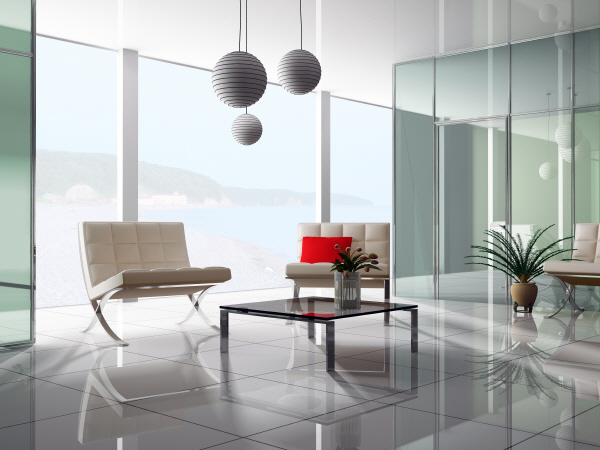
With pressure to justify every square foot of real estate and conserve energy, the larger-than-life front hall is undergoing a metamorphosis. It’s not disappearing, though—rather, it’s doing its job of welcoming in a more compact, efficient way.
Design experts may use different terms to describe the space beyond a front door—vestibule, hallway, entryway, foyer. The terms are quite interchangeable with slight variations. A vestibule is generally a small, separate air-lock that stops cold and hot air from entering the rest of the house. A hallway provides entry but also links spaces and rooms—at the front or anywhere in the home, says design guru Marianne Cusato, author of The Just Right Home (Workman Publishing). Of course there are dozens of other words you can use to describe this space. And whether you pronounce the foyer as foy-yay with a French spin or foy-er (rhymes with lawyer) really depends on how grand you or your home owners want the space to sound.
Whatever you call it, it’s important to understand the potential impact the entrance to a home can have on a visitor’s first impressions, says Stephanie Mallios, e-PRO, salesperson with Towne Realty in Short Hill, N.J. “If there are too many shoes and coats strewn about and no place to put keys or gloves, many buyers will have a tough time imagining how they’ll live there,” she says.
Study these eight design details to help your clients create a welcoming space that does its job well, both aesthetically and functionally—no matter what it’s called.
Size, scale, sequence. Due to energy-efficiency concerns,an entry with a soaring ceiling and sweeping staircase is far less popular than it once was. Still, a modest entryway as small as 4 feet to 5 feet wide can convey a proper sense of arrival, says Cusato. More important than size is the scale (the space should be in proportion with the rest of the house) and the sequence (the rest of the home should flow out in a logical way), says architect Duo Dickinson, author of Staying Put (Taunton Press). Upon entering, people should be able to see other spaces and rooms and know where to go next, says architect Julie Hacker of Cohen-Hacker Architects in Evanston, Ill. In the best layouts, there may even be a view straight through to a backyard.
Height. The number of levels or floors in the structure often determines this factor, though even two- and three-story homes are moving away from entries with soaring ceilings. The location of a stairway will hinge in part on square footage and what role an architect or builder wants the stairs to play. In smaller homes, it’s often part of the foyer but off to the side, and goes straight up—being purely functional. In larger homes, the staircase might occupy its own separate hall and curve gracefully to a landing, past a window or window bank, and up to the next level. To carpet or not is a personal preference, though bare treads can be noisy; a good compromise is a runner covering painted or hardwood treads.
Millwork. To fashion a gracious entry, most design pros recommend a door that is at least three feet wide and 72 inches tall. The trend of pricey double doors is disappearing, according to Chicago-area builder Orren Pickell. Whether a door includes a glazed transom or sidelights should depend on how home owners feel about privacy and bringing natural light into the interior. The size of the glazing should be proportional to the door’s width and height. For baseboard and crown molding, simplification is the overriding trend, which keeps fussiness and costs down, except for the most traditional houses, says Cusato. Wainscoting is another way to add visual detail. Columns are helpful to screen off adjoining rooms without completely walling them off. Hacker uses two columns with space for books cut out on the back side of each on the living room side to separate areas in her home.

Lighting. Good lighting is essential for safety, but it also sets a welcoming mood. A chandelier or large pendant is the obvious choice, while ceiling cans or sconces also work well. Whatever fixture home owners prefer, advise them to install dimmers. Not only will this allow them to save energy, but options for differing lighting intensity and color can also help set a dramatic mood for a party, a bright feel for an open house, and a low-light one for romance.
Flooring. A visually rich, substantial looking floor will reward visitors, says Dickinson. But due to the wear and tear common for front entryways, it should also be practical. Slate, stone, and porcelain meet that criteria, though they can be cold on bare feet in winter. Avoid soft woods that may dent and scratch; don’t use carpeting since it will become too dirty with traffic; and avoid vinyl unless it’s one of the more expensive, newer-looking versions. Home owners may wish to set off the area in a different material than adjacent rooms and hallways. But choosing one common material for several rooms produces a feeling of continuous flow and makes smaller rooms appear larger.
Furnishings. Depending on the entry’s size, home owners might consider adding a table to place mail, gloves, hats, and keys. Also, a mat or rug to wipe off feet and a chair or bench to put on and take off footwear can be helpful for maintaining tidiness. Finally, a mirror to check one’s appearance before heading out the door—or joining a group when entering—can be a welcome sight.
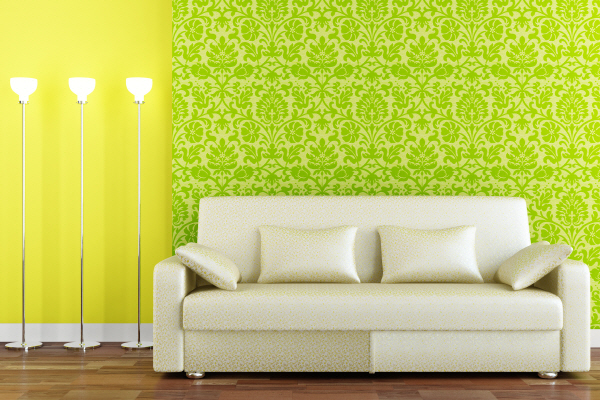
Wallpaper vs. paint. This choice is highly personal. If home owners love color, they should go for the paintbrush, with the knowledge that darker palettes can add drama and romance. Of course, not all future buyers will have the same taste, but repainting is an easy home repair in smaller areas. If your clients are into patterns, the same rule applies, though today many wallpapers are quite easy to hang and remove. The key is for surfaces to appear clean and not look dated, which may mean banishing that old-school floral style.
Bells and whistles. A coat closet is a nice extra, as is a powder room, though newer construction may feature such conveniences at the back of a domicile where they’ll be used most frequently. An umbrella stand can hold a variety of other items—canes, tennis racquets—neatly, and niches or shelves can display collectibles. A doorknocker outside, even if rarely used, is a classy touch akin to wearing one great piece of statement jewelry. It can really give the front door a Downton Abbey feel.
If your buyers and sellers take away just one lesson from you, it should be that a well-planned front entrance—no matter the name, size, or style—will add value to their home.
Credit to Barbara Ballinger
Barbara Ballinger is a freelance writer and the author of several books on real estate, architecture, and remodeling, including The Kitchen Bible: Designing the Perfect Culinary Space (Images Publishing, 2014). Barbara’s most recent book is The Garden Bible: Designing Your Perfect Outdoor Space, co-authored with Michael Glassman (Images, 2015).

Design changes, as does architecture. Trends don’t emerge as rapidly here as they do in say, food or fashion, but the economy, the environment, and demographics all spur shifts in the choices of materials, designs, layouts, and construction methods for single- and multifamily dwellings.
These 12 trends reflect ways to cope with environmental challenges, incorporate new building materials and methods, and alter the looks and functionality of our homes. Hear top designers and architects explain why these emerging trends are important and how they’ll influence real estate choices in the near future.
Why it’s important: Mounting climate change pressures mean buildings need to better withstand natural disasters. Similarly, because our natural resources are dwindling, it’s increasingly important that structures be designed and built sustainably. Industry professionals are finding materials and construction techniques to meet both challenges. The Fortified Home Certification standard—created by the Insurance Institute for Business & Home Safety and Architectural Testing Inc.—represents engineering and building levels that provide sturdier structural envelopes that are more resilient against the worst weather conditions than those found in most current building codes. And the trends of making better use of natural resources and generating energy on site—for a double win of more energy and less money spent—will continue into 2016.
How this will impact real estate: Increased durability means more lives and buildings will be saved, costs to rebuild will be pared, and insurance premiums will be lowered. The trend is happening nationwide, not just in hurricane-prone locales like Florida, says Jacqueline Nunez, founder of WonderGroup LLC in Boston. Her Allandale Residences project, designed by Merge Architects in Boston, will be among the first residential developments in New England to be receive Net-Zero and LEED Platinum certifications. It will include 16 townhomes and four condos on a two-acre site in West Roxbury, Mass. “It’s responsible to build environmentally correct,” Nunez says. Such projects have the potential to change real estate offerings as home buyers ask professionals not just about square footage and amenities but also about materials and methods, especially in areas where climate change is most destructive— “where sea levels are rising and strong hurricane winds are blowing,” Nunez says.
Why it’s important: More home owners want quality, luxurious materials, but the finest choices aren’t always in the budget, says architect Michael Prifti, principal with BLT Architects in Philadelphia. “Home owners seem to prefer stone, for example, over brick, over clapboard, and over vinyl, but not everyone can afford stone,” he says. With construction and material costs increasing, the need has emerged for less expensive options that still look luxe and hold up well. For example, instead of solid stone facades, architects may opt for stone veneer on studs and drywall instead of plaster inside. Or, rather than go with terra-cotta, a timeless but expensive material, they can select a handsome thin terra-cotta veneer applied to manufactured panels, Prifti says. Both examples are less costly and reflect modern building methods, particularly for constructing multiunit developments.
How this will impact real estate: Smart real estate professionals should explain to cost-conscious fixer-upper clients that there are new materials out there that might better fit a tight budget. After all, architects and builders are constantly being challenged to find value for clients in both residential and commercial development, says Prifti. “We research to find new products and new ways to use existing materials, so they’re durable, affordable, and offer more colors and textures,” he says. According to colleague and BLT Senior Project Architect Jennifer Burnside, “Many of the new products, materials, and methods lend themselves to fabrication in large modular configurations in weather-controlled factories, are shipped on trucks to a site, and are erected with a crane, which saves time and labor.” Working this way also saves your clients money.
Why it’s important: Droughts continue to affect large areas of the U.S., making water more expensive and decreasing its availability, especially in the Southwest and California. Water-saving fixtures such as low-flow toilets and showerheads have become standard—even mandated—in many areas, but architect Gita Nandan, with architectural firm thread collective in Brooklyn, N.Y., says buyers are looking for more. In the backyard and rooftop of a four-unit Brooklyn building her firm designed, there’s a rainwater harvesting system with modular vertical tanks connected to a drain from the rooftop. The rainwater is used to irrigate the roof gardens and the yard. The building also features low-flow fixtures. Since these features were added, the building has seen a 30 percent drop in water consumption.
How this will impact real estate: Water conservation will become as important as energy conservation, and homes that collect as much water as they consume will be as popular with buyers as Net-Zero–energy homes now are, Nandan predicts. She expects that real estate professionals will see more demand for water-saving measures such as water-smart irrigation sensors, composting toilets, gray-water recycling systems, and rainwater harvesting.
Why it’s important: Sustainable materials such as glass, in conjunction with new manufacturing technologies, are expanding the choice of colors, textures, and sizes of materials available for home design. At the same time, 3-D manufacturing, what some call the third industrial revolution, has created a new panoply of readily available, prefabricated materials as an alternative to more expensive custom choices, says architect Cecil Baker, founding partner of Cecil Baker + Partners in Philadelphia. One example Baker cites is a new manufactured technology for glass, which makes it possible to incorporate patterns and etched surfaces directly into the glass. This new process means that glass can also be manufactured with LED lighting built in, which adds sophistication and also illumination, a double win, Baker says.
How this will impact real estate: The glass-and-LED combination is just one new technique that can result in a product that incorporates a sustainable material into a sturdy, practical, energy-efficient, and glamorous new surface for kitchen and bathroom countertops. Such choices greatly personalize rooms much more than another granite, laminate, or Corian top might do, and help to distinguish listings in a crowded market.
Why they’re important: Many home owners crave authenticity, no matter how durable, affordable, and convincing the imitations may be. A case in point: the increased demand for reclaimed wood boards, which wear well, show the patina of age, and reveal visual character, says Jamie Hammel whose The Hudson Co. custom mills and finishes flooring, paneling, and beams at its mill in Pine Plains, N.Y. “People like knowing the history of their materials and products — the provenance — and these materials tell a story,” Hammel says. He adds that consumers are drawn to the sustainability of reuse as well as the health benefits of choosing older materials that don’t off-gas. “There’s a parallel with what’s happening in the food industry,” Hammel says.
How this will impact real estate: The type of wood flooring found in many homes will take on greater importance for many segments of the homebuying population, and it may be that soon not just any wood will do. The crème de la crème of wood flooring —reclaimed boards—may become the equivalent of once sought after granite and now quartz or marble. You may also see more home owners favor this option when they replace existing floors. Finally, be aware that the latest generation of reclaimed boards displays a lighter, Scandinavian matte finish that looks better with contemporary furnishings that are becoming more in vogue than traditional furniture.
Why it’s important: With so many home owners now favoring modern design, yet not wanting a harsh, laboratory look, designers search for alternatives. Architects Ada I. Corral and Camille Jobe, of Jobe Corral Architects in Austin, Texas, are among those with a solution: Select materials that offer a handcrafted, warmer style rather than an “off-the-shelf,” cold, mass-produced look for their modern settings. “We’re trying to bring craftsmanship back while maintaining a clean, crisp overall look,” Corral says. One favorite choice is burnt wood, a Japanese technique that works well with cypress and cedar and makes the wood look older, yet also strengthens its resilience against rot, pests, and fire. Another favorite is metal that’s shaped into thin, elegant veneers for shelving, beams, drawer handles, around doorframes.
How this will impact real estate: Keep this trend in mind while staging modern-styled properties or alerting buyers and sellers to new decor ideas. These types of materials and new applications add surprising touches and warmth in modern dwellings — a feeling of a more lived-in, loved setting. And their appeal will only grow, pundits predict. “So many people have tired of having their houses look like spare hotels. These choices differentiate — and warm — rooms and homes,” Jobe says.
Why it’s important: Downsizing is big, reflected in part by the growth of the tiny house movement. But flexibility and mobility are also sought after, and many desire a hipper method of attaining this than RVs can offer. Enter the “Escape Sport”, an 8 1/2-foot-by-20-foot, 170-square-foot house on wheels that meets these challenges and more. It can comfortably sleep up to four people and can withstand bad weather with its steel frame, aluminum siding, and weather-resistant wood. It’s also environmentally friendly with a solar power system, composting feature, incinerating toilet, gray water irrigation hook-up, rainwater integration, advanced electric fireplace, and energy-efficient induction cooktop. And its toilet and sink are full sized, which is not always the case with RVs. Developer Dan Dobrowolski says this option will appeal to home owners who want to travel in smaller spaces, but don’t want to feel claustrophobic or give up the comforts of a bigger home.
How this will impact real estate: The design profession keeps looking for options beyond traditional, stick-built houses, hence the uptick in prefabricated, manufactured housing. This brand-new example offers shelter to those who are keen on smaller houses, but don’t like the idea of always staying put, Dobrowolski says. It also offers other possibilities for the real estate industry. It allows some home owners to “test drive” small-scale living. And if the trend continues to expand, landowners may find empty lots in vacation areas to be the perfect spot to rent out to these home owners on wheels.
Why it’s important: Currently there are 78 million baby boomers and the aging population is increasing — in fact, it’s expected to rise by 50 percent between 2010 and 2020, according to Aging in Place, a state survey of livability policies and practices. A deep, wide walk-in pantry allows a walker or wheelchair to maneuver through easily. If the pantry also has a flexible shelving system that can be lowered through special hardware that’s another boon for home owners seeking to remain independent, says Rosemarie Rossetti, an expert in universal design who constructed a demonstration home and garden with her husband in Columbus, Ohio, after she had a spinal cord injury at age 44, 11 years ago. “A pantry with proper shelving has a lot of benefits for seniors lacking mobility and not able to open folding doors or reach high items,” she says.
How this will impact real estate: Walk-in pantries and pocket doors, which are easier to open and close than traditional doors and save 10 square feet of floor space, are just two of many universal design features becoming more desired and even edging into the mainstream. “Children and those who are shorter also will be able to reach shelves easier, and when outfitted with better lighting, pantries are safer,” Rossetti says. Homes that have universal design features will be in greater demand by both the senior market and younger informed home buyers, says Joseph Mezera, a Seniors Real Estate Specialist who focuses on this niche through his Seniors First Realty in Columbus, Ohio. “Some may not want big doorways and high toilets that they associate with nursing homes, but those who are smart will listen to trained salespeople explain that it’s better to take preventive measures.”
Why it’s important: Screened porches once were the prime quasi-outdoor space in a home that could protect occupants from bad weather yet offer a feeling of the outdoors. But many porches block daylight and views, and they can only be used part of the year in some climates. Now, well-designed, large-scale door panels that fold up like garage doors or open into a home’s walls via big pocket doors are becoming more readily available at affordable prices, says architect Elizabeth Demetriades of Demetriades + Walker in Lakeville, Conn. Some have highly functional, retractable insect screens, too.
How this will impact real estate: These new bigger openings permit better views of the outdoors, greater enjoyment, and easier access between indoors and outdoors. “Blurring the distinction seems to be a leitmotif for many of our clients these days,” says Demetriades. And the trend may further increase interest in landscape design since the greater connection will make yards more a part of homes rather than separate entities, only to be enjoyed in prime weather.
Why they’re important: Color trendsetter Pantone typically debuts only one superstar color of the year. But in 2016, two are taking center stage: “rose quartz” and “serenity.” Both reflect the rise of softer colors, along with the continued use of whites and creams. Some designers think this color direction and its layered palettes lead to a more personalized, sophisticated design. Cheryl Kees Clendenon of In Detail Interiors in Pensacola, Fla., is a fan. “I like the layered approach since it evokes a more emotional response and doesn’t read as a single, stark color,” she says. Clendenon attributes the situation to current affairs as much as to design. “When people get more nervous, which many are because of what’s happening in the world and [it being] an election year, they want colors that aren’t wild and crazy but calming, which these are,” she says. Time will tell if a non-election year and fewer terrorism threats may inspire a return to bolder hues.
How this will impact real estate: These new colors are already turning up inside homes in countertops and backsplashes, as seen by Prexury by Cosentino’s “rose quartz,” a durable, easy-maintenance manmade aggregate of semi-precious stones. Elsewhere in homes, the more complex color palettes will inspire buyers and sellers when making selections for everything from paint to fabrics and furnishings. But pairings are key. Clendenon suggests using Prexury’s rose quartz with off-white or cream cabinets. Along with this approach will come more textures and patterns, but again in subtle combinations, she says.
Why it’s important: The old standby of copper—think of those pots your parents, grandparents, or Julia Child used—started its re-emergence last year. And the reason that it’s becoming a more widespread alternative to stainless steel, wood, and other materials isn’t all surface. Yes, copper can add sheen, sparkle, and a 1940s Hollywood glamour. But an equally big impetus is that it reduces more than 99.9 percent of bacteria in between routine cleanings, important because antibiotic-resistant superbugs are on the rise, according to The Copper Development Association, based in New York.
How this will impact real estate: This shiny, goldlike hue will become more prevalent in homes as concern grows about buying healthy houses without mold, toxins, and bacteria. To help, U.S. manufacturers are producing more options in copper than just refrigerator, oven, and other appliance fronts, the developments that initially helped revive the trend. Throughout homes, buyers can add copper sinks, door handles, light switches, and trim. To enhance its appeal, manufacturers are also expanding the types of hues available. Already, there’s a copper-penny color, brushed nickel, yellow brassiness, and bronze on the market.
Why it’s important: Living keeps getting more casual, and this is certainly the case in the kitchen. “Everything happens in the kitchen, and people don’t want to be closed away from interaction with their families,” says Chicago kitchen designer Mick De Giulio of de Giulio Kitchen Design, author of Kitchen (Pointed Leaf Press, 2015). Consequently, they’re willing to put more into their kitchens — more space (500 square feet is not uncommon, he says), bigger budgets, better design, more windows and light, and the types of detailing, like moldings and beams, once reserved for more formal spaces.
How this will impact real estate: As open plans that incorporate more important kitchen space become commonplace, finding ways to keep the workspace neat becomes key, too. This may mean more niches and elements that hide small appliances built into the main kitchen. Home owners with more room and a bigger budget might consider adding a “back kitchen,” where preparations take place and small appliances like toasters and coffee makers are stored. To maintain the interflowing social feel, the spaces remain open to one another. A growing number of home buyers may be willing to forgo a dining room, says De Giulio.
Be on the lookout for these trends in 2016. You’ll be in better tune with buyers who are searching for these features in their new homes or want to add them as space and budgets permit. And staying aware of the latest trends can help you guide sellers to differentiate their listings beyond location, size, and amenities.
Barbara Ballinger is a freelance writer and the author of several books on real estate, architecture, and remodeling, including The Kitchen Bible: Designing the Perfect Culinary Space. Barbara’s most recent book is The Garden Bible: Designing Your Perfect Outdoor Space, co-authored with Michael Glassman